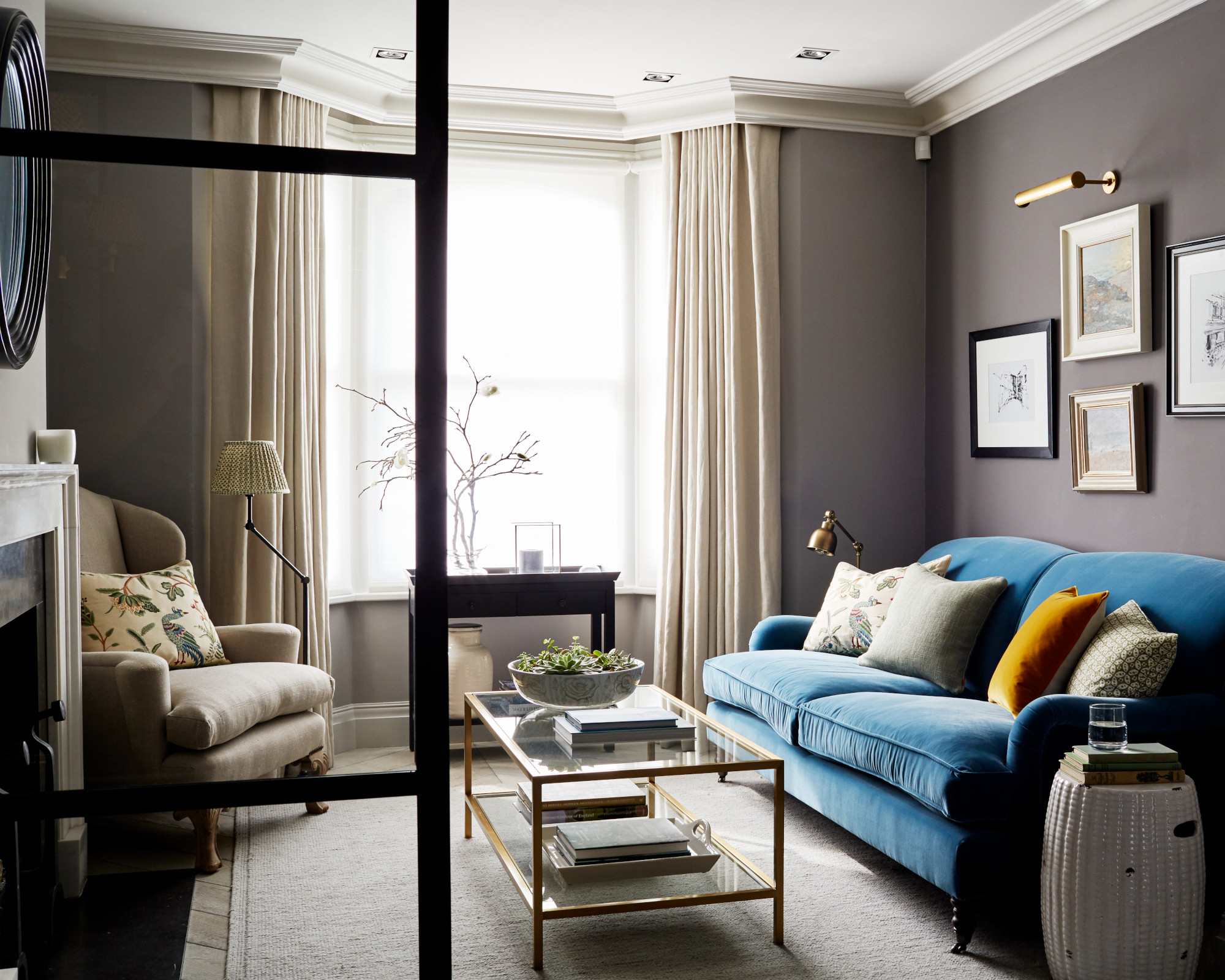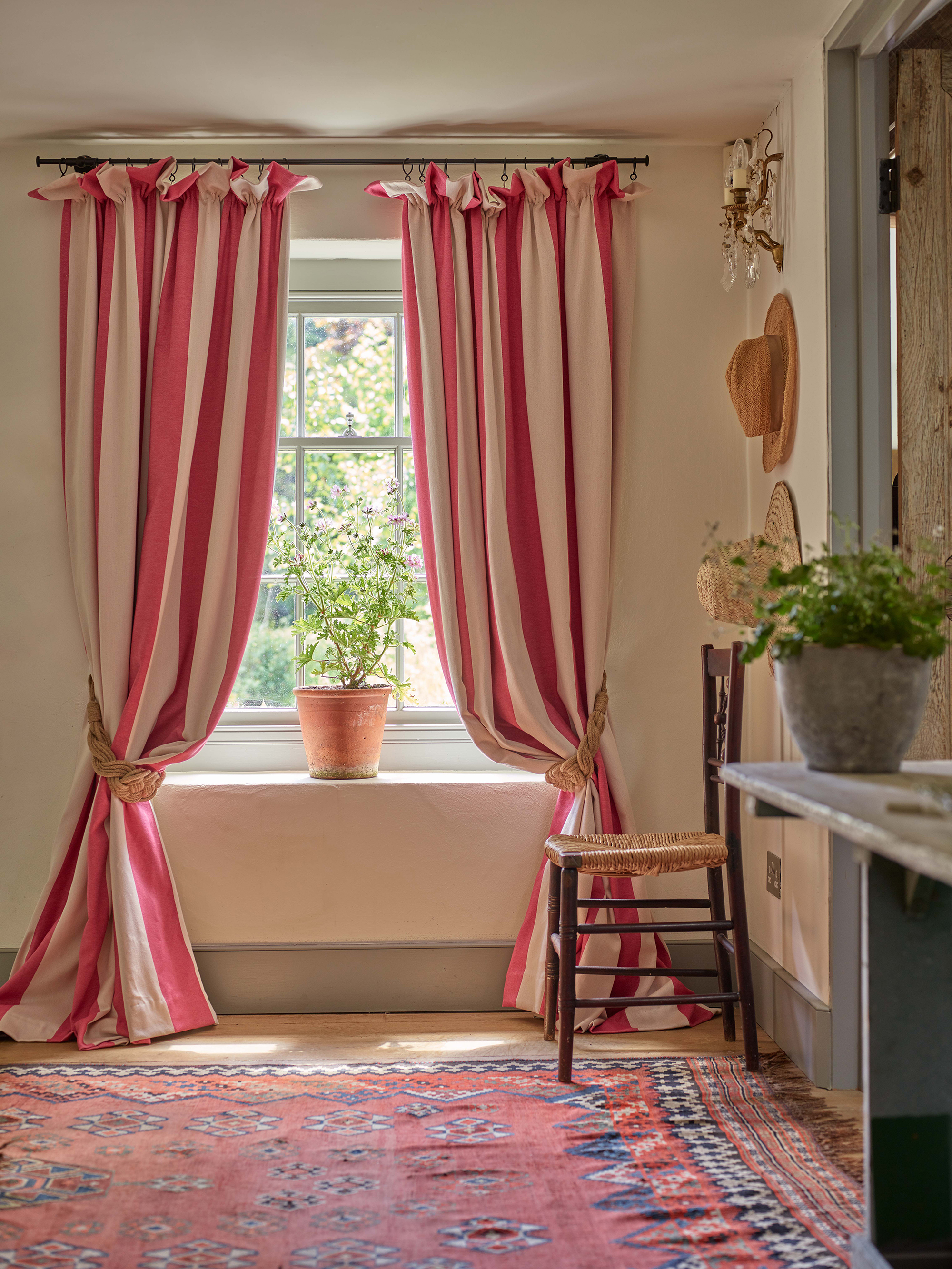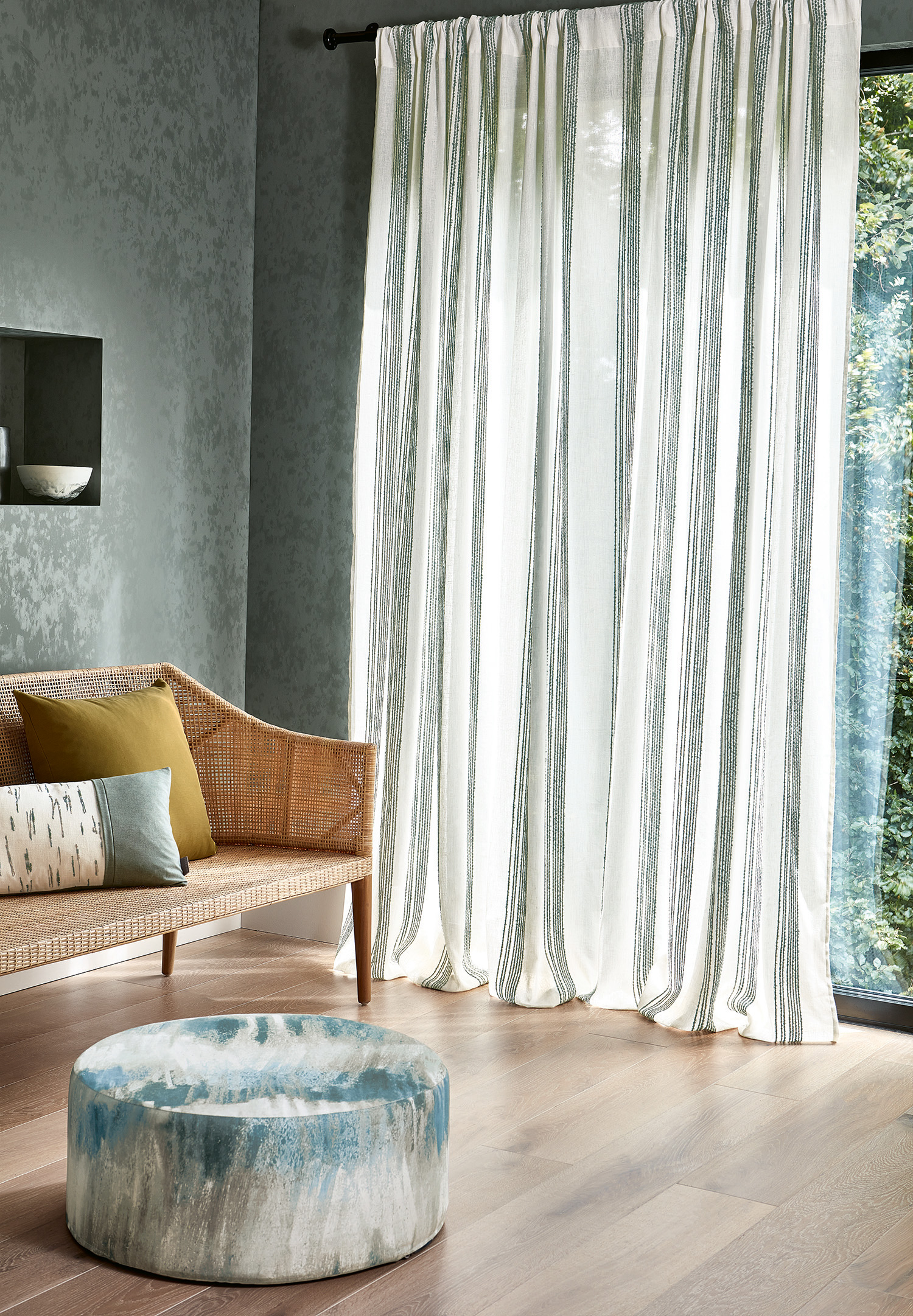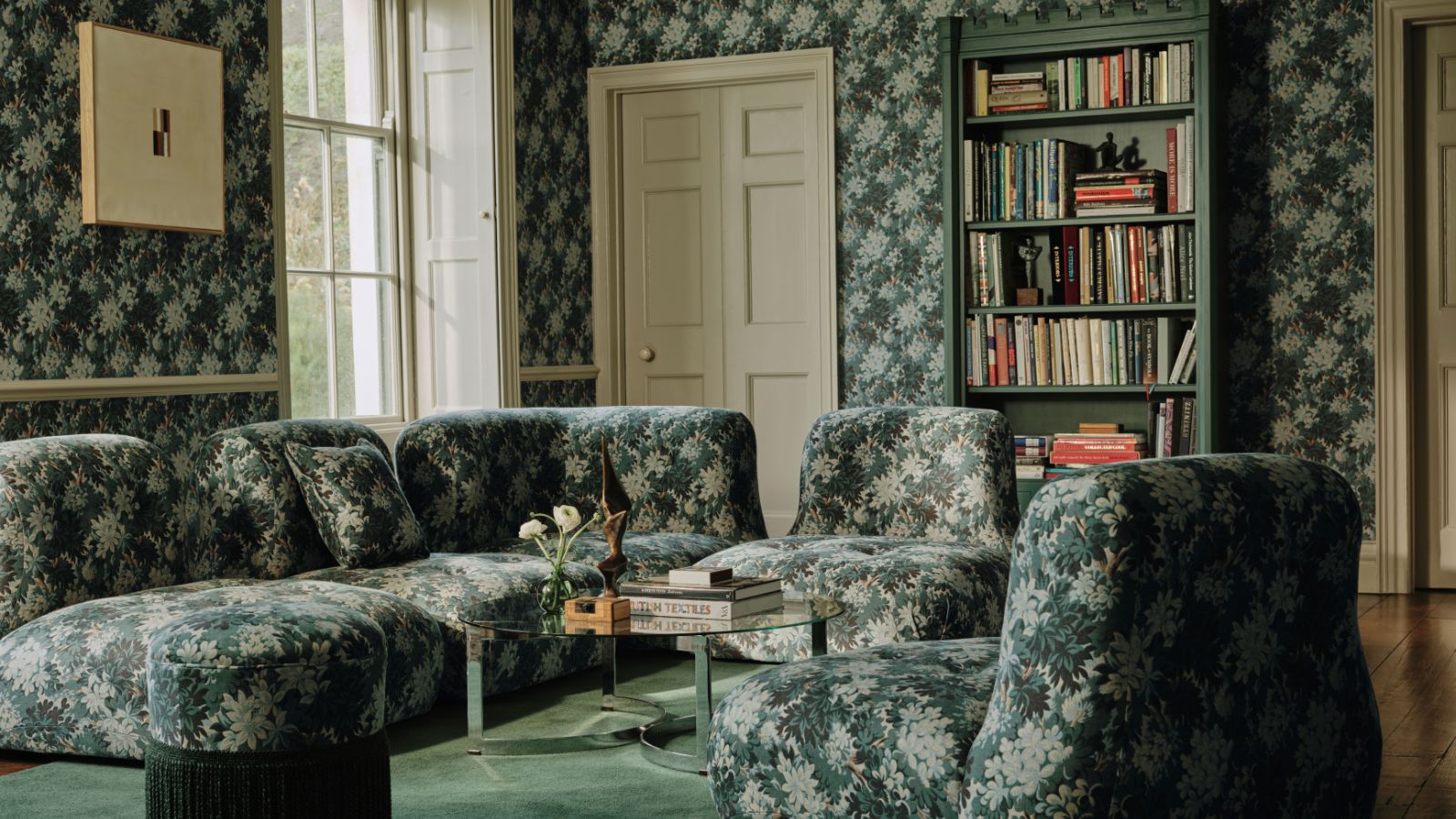How long should curtains be? The golden rules from the experts
Must-know guidelines for chic window treatments all round your home


There are a handful of curtain measurements it’s crucial to be aware of for well-dressed windows, and one of them is length.
When your window treatment ideas include curtains, focusing on length is essential since otherwise the draperies can look old-fashioned and awkward rather than super chic. Equally, though, curtain length needs to be practical for the particular room in which they’re hung, and to fit the window itself.
To get curtain length right no matter where you’re hanging them, use the golden rules curtain experts and interior designers do. They‘ve shared them here.
How long should curtains be?
Executing all your curtain ideas beautifully means knowing what width curtain panels should be but also how long they should be. Bear in mind that you’ll be measuring curtain length from the rod, so hang the curtain rod at the correct height first.
As for a general rule, floor length or just a little above it is the preferred look. Maggie Griffin, founder and principal designer of Maggie Griffin Design, recommends, ‘The drapery panels should skim the floor.’
But what length should curtains be to achieve the desired effect? And what are the exceptions to this general rule? Our guide has the answers.

Assess curtain length for a room
While floor-length curtains are an interior designer’s favorite, there are factors specific to the room and how the draperies are used that they’ll take into account when deciding exactly how long curtains should be, and which you should, too.
‘The ideal length of your curtains depends on how busy the space is, where you are hanging the curtains, and if you plan on opening and closing them daily,’ explains Kelly Simpson, senior director of design and innovation at Budget Blinds, experts in blinds, shades, shutters, and drapes.
Consider three alternatives. The first is that curtains can hang just a little above the floor for a smart finish. On the other hand, they could be longer with two options possible. ‘For an elegant look, choose curtains that touch the floor or puddle on the floor, but keep in mind that curtains that puddle could pose a tripping hazard and both lengths will collect more dust,’ says Kelly Simpson.
If the curtains need to block light efficiently as well as dress the window, note that longer can be preferable. ‘If blackout is needed in a space you can make your drapery longer, and live with the puddling that occurs at the hem of the drapes and the floor,’ says Noelle Isbell of Noelle Interiors.

Measure for curtain length
To achieve the desired effect with your curtains, with them hanging just above the floor, touching it or puddling on it as preferred, you’ll need to measure accurately from the curtain rod to the floor.
Bear in mind that the type of curtain heading influences measurements. Check your drapery supplier’s guide, but typically for pleated curtains that cover the rod measure from the top of the rod to the floor, and for those that don’t cover the rod from the bottom of the rod to the floor. For rod pocket curtains that fit over the curtain rod, measure from the top of the rod and add half an inch, and for grommet curtains, measure from the top of the rod to the floor and add the distance from the top of the inner grommet ring to the top of the drapery panel.
After this, for curtains just floating above the floor, you can subtract half an inch from the distance from the rod to the floor, although interior designer Katie Davis of Katie Davis Design says, ‘We prefer a quarter of an inch above the floor for a crisp, tailored look.’
For curtains that skim the floor use the distance from the rod to the floor.
For curtains that puddle on the floor add between 1 and 3 inches to the distance from the rod to the floor, although you can be more lavish than this depending on the effect you want to create.
‘Always take several measurements when you’re measuring curtain length,’ advises Lucy Searle, global editor-in-chief of Homes & Gardens. ‘It’s rare for floors to be even, so it’s important to measure in several places.’
Exceptions to floor-length curtains
There are some situations when curtains can’t or shouldn’t touch the floor or puddle onto it, however.
Long drapes might not be practical (or even possible because of the location of furniture or fittings) in the kitchen or bathroom. It’s also possible that there is a deep windowsill in the way, or you might have a radiator under the window, which shouldn’t be blocked with curtains. Café curtains, which only cover the lower part of the window are also an exception.
If any of these is the case, it’s still straightforward to measure. Choose between a final height of half an inch above the sill, or use the distance to the sill for curtain length according to preference.
What size curtains do I need?
If you’re opting for readymade curtain panels rather than custom drapery, you’ll typically find a choice of between 63 and 108 inches. Select the length nearest to your measurements, but where this isn’t exact, longer is better. They can be hemmed by a tailor to get the correct fit, which will create a custom look.
How much longer should curtains be than the window?
Curtains that aren’t floor length should end at the windowsill if the dimensions of the sill are too deep for them to hang to floor length. This length might also be necessary if the curtains are to be hung in a kitchen or bathroom where floor length curtains just aren’t practical, or even an option. It can be a good length for kids’ rooms, too, so they aren’t tempted to play with them or pull them.
If there’s a radiator underneath the window, sill length is also preferable, so the curtains don’t stop the heat from the radiator reaching the room.
Should your curtains touch the floor?
Curtains can touch the floor so that they skim or, as some designers say, ‘kiss’ it. It’s a stylish choice, and one that’s many people’s preference. However, you might want to consider instead a length that allows the curtains to float just above floor level, say half or quarter of an inch. They won’t quite touch but will still appear floor length and it means they can be opened and closed easily.
For a romantic look drapery panels can break at the floor. This requires extra fabric – usually just a couple of inches, but the look can be a really extravagant one with several additional inches of fabric. The look isn’t practical in all rooms, however, and means extra work when it comes to caring for curtains.
Sign up to the Homes & Gardens newsletter
Design expertise in your inbox – from inspiring decorating ideas and beautiful celebrity homes to practical gardening advice and shopping round-ups.

Sarah is a freelance journalist and editor. Previously executive editor of Ideal Home, she’s specialized in interiors, property and gardens for over 20 years, and covers interior design, house design, gardens, and cleaning and organizing a home for Homes & Gardens. She’s written for websites, including Houzz, Channel 4’s flagship website, 4Homes, and Future’s T3; national newspapers, including The Guardian; and magazines including Future’s Country Homes & Interiors, Homebuilding & Renovating, Period Living, and Style at Home, as well as House Beautiful, Good Homes, Grand Designs, Homes & Antiques, LandLove and The English Home among others. It’s no big surprise that she likes to put what she writes about into practice, and is a serial house renovator.
-
 How to grow astilbe – expert advice on cultivating this shade-tolerant flowering perennial
How to grow astilbe – expert advice on cultivating this shade-tolerant flowering perennialShade-tolerant and pest-resistant - astilbe are hardy and tough perennials that can thrive in many settings
By Ellen Wells Published
-
 Vintage prints are making a comeback – designers say to look out for these 5 nostalgic patterns this year
Vintage prints are making a comeback – designers say to look out for these 5 nostalgic patterns this yearThese vintage-style patterns are all the rage right now, and we spoke with design experts to learn how best to style them in the home
By Eleanor Richardson Published